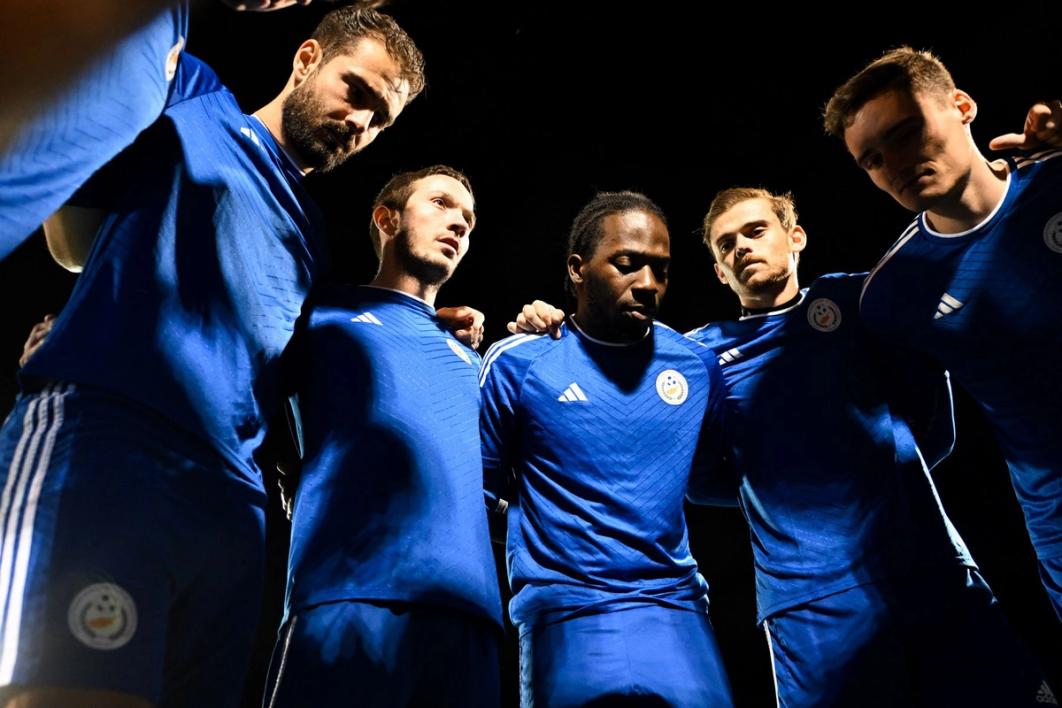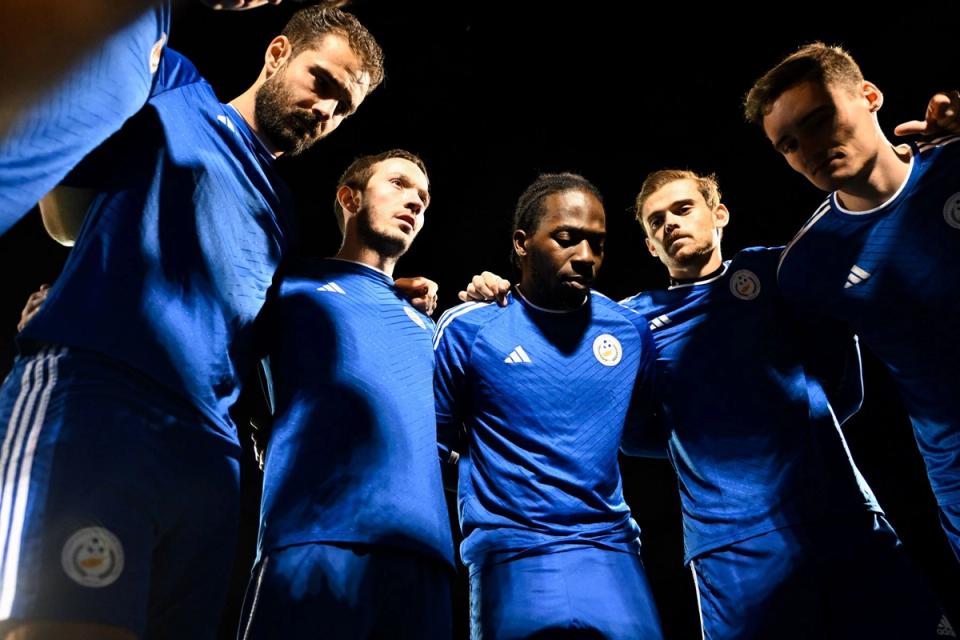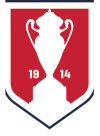The Very International, Very Local History of NY Pancyprian-Freedoms
Tobias Carroll takes us inside New York Pancyprian-Freedoms, the Queens-based club with big current ambitions, a proud Open Cup tradition -- and a larger mission beyond the field.



From an idle glance, you wouldn’t know you were seeing a piece of soccer history.
The home of New York Pancyprian-Freedoms sits on a crowded block in the northern reaches of Astoria, Queens. Overhead the N and W trains run, en route to Astoria-Ditmars Boulevard station, the final stop for both. If you step inside the doorway to the organization’s headquarters, you’ll see a flight of stairs heading up, with images of the team’s history flanking both sides.
There are few spaces in New York City where you might see a photo of the 1983 CONCACAF Champions Cup a few feet from one taken at a social event where former Massachusetts Governor Michael Dukakis is prominently featured. And yet it’s all part of the organization’s history – a history in which soccer plays a prominent role.
When I paid the club a visit to tour their home, I made my way through a lounge area where a few men sat, watching Aris Limassol take on Real Betis in the UEFA Europa Conference League. Surrounding them were more photos detailing the near fifty-year history of the Pancyprian-Freedoms.
There were also a host of trophies the club had won over the years, including the 1983 U.S. Open Cup itself – a representative of one of the three years in which the club won the tournament. The other two, for the record, were 1980 and 1982.
Two of those winning Finals (1980 and ’82) came against Maccabee Los Angeles – five-time Open Cup champions and one of the top teams of the era between the folding of the original North American Soccer League (NASL) and the founding of Major League Soccer (MLS) in 1996.
This year, New York Pancyprian Freedoms are heading into the Fourth and Final Qualifying Round of the 2024 U.S. Open Cup, following a 3-0 victory over New York Renegades FC on a chilly October night at Belson Stadium at St. John’s University. Up next, they’ll face Massachusetts’ Brockton FC United on that same pitch for the right to advance through to next year’s Tournament Proper.


“The club is really an athletic component of a bigger mission of the Pancyprian Association, which has cultural, arts, and educational programs,” said Paul Kontonis, assistant coach of the amateur side. “Core to what we're doing is helping Greek Cypriots come to study here in the US. We have numerous players every year that we are providing a scholarship to and giving them a roster spot to play with us as well.”
“Not only are we striving for excellence in how the team plays, but we're actually trying to help out these individuals continuously, even to this day,” Kontonis added.
As Kontonis explained, the team exists as part of a larger organization – one formed in the wake of Turkey’s invasion of Cyprus in 1974, which left thousands of Cypriots displaced. As the organization’s co-founder and president Philip Christopher outlined, New York Pancyprian-Freedoms soon found a home in the local soccer hierarchy. This included a string of Cosmopolitan Soccer League (CSL) championships – the team has won nine in total – as well as that trio of Open Cup wins in the 1980s.
The club’s history includes top-tier international contests in addition to domestic honors. Christopher recalled the Pancyprian-Freedoms’ trips to the CONCACAF Champions Cup, granted to the annual winner of the Open Cup.
At the club’s headquarters, you’ll find photographs of the team and Honduras’ C.D.S. Vida as they prepared to play a match at Hofstra University in 1984.
That wasn’t the team’s only time in continental competition. They also have the distinction of defeating Mexico’s Puebla F.C. a round earlier that same year – and eliminating another Honduran side, Club Deportivo Motagua, in 1983. As Christopher recalled, the away leg of the latter series included thousands of supporters of Motagua’s local rivals turning out to see the two teams clash in Tegucigalpa.
It was rarefied air for the Pancyprian-Freedoms, who were a semi-pro outfit at the time.
The early years of New York Pancyprian-Freedoms saw a number of European players donning the club’s colors. Nowadays, the emphasis is more on player development. “In our last national winning team,” General Manager George Halkidis explained, “I think 80 percent of the roster was players that moved up the ranks.”
There’s a generational component to that player development as well. “There's a great number of those that came and stayed – and their sons continued on to the youth programs,” Halkidis said. And that can even go beyond one generation.


“We have, for example, a grandfather who had played with the club early on whose grandkid is now in the youth side of the program,” Kontonis said. That youth side is not small, with a total of 16 youth teams associated with Pancyprian-Freedoms. The club also has a second team that trains with the first team.
The pitch that the club calls home is one of several ties between the Pancyprian-Freedoms and St. John’s University. “The majority of our players are ex-college players,” Halkidis said, “with a big lifeline from Saint John's.”
Some of the team’s alumni and current players have even more of an international background. Nigerian-born striker (and St. John’s alumnus) Tani Oluwaseyi is one example. He played for the Pancyprian-Freedoms in 2021 and was subsequently drafted by MLS’ Minnesota United FC. On loan at San Antonio FC this season in the second-division USL Championship, Oluwayesi set a club record for goals scored.

The Pancyprian-Freedoms squad in 2023 continues this international profile. One of the club’s current players, Shavon John-Brown, is a past recipient of Grenada’s Footballer of the Year award and was on his country’s roster for Gold Cup qualifying matches this summer.
“We've adapted and responded to our community having changed because we have a cultural identity and the belief system of not only having excellence in sports and education, but helping others. We also are within a changing community demographic being in Astoria, Queens, New York,” Kontonis explained.
“We've seen that change in the generations of people as well,” he went on. “So yes, we have an emphasis on Greek Cypriots [like captain Andreas Chronis, the son of immigrants who arrived in Queens in 1977] and the Greek community that's in Queens, but we are not closed off to other members of the community. And we take that very seriously – to help people and players as much as we can.”
Halkidis brought up another Pancyprian-Freedoms alumnus to illustrate the connection the club has with players past and present. “Jeff Matteo is an assistant coach at Seton Hall, but I'm on the phone with him constantly, at least twice a week,” he said.
As Kontonis explained, the organization’s focus creates a high standard for how the team conducts itself. “Having this piece of our operation that is mission-driven and purpose-driven is the other part that keeps us saying, ‘Okay, it's worth doing everything else and fighting through all that because of this.’” he said.
“Win, lose, or draw,” he added, “we're going to put quality out there.”
Tobias Carroll is a Brooklyn-based writer and the author of four books, most recently the novel Ex-Members. He's on X/Twitter at @tobiascarroll, and is also on Instagram at @tobiascarroll.




